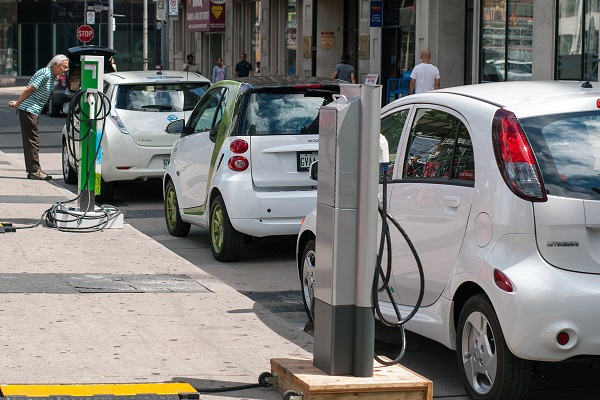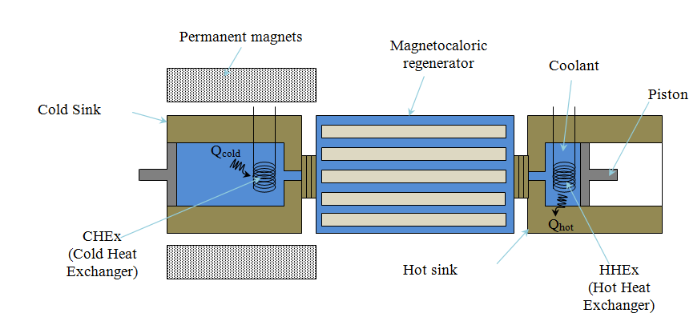
In a previous blog post, we focused on the growing use of magnetic cooling technology as a safer, more eco-friendly method of refrigeration. Here, we look at how one team of researchers analyzed the potential use of this technology in the design of electric vehicles.
The Magnetic Cooling Movement
During a period of time in which energy efficiency and sustainability are heavily emphasized, magnetic cooling has found its way into new technologies, from industrial to household applications. Based on the magnetocaloric effect, this cooling technology involves the phenomenon in which a temperature of a magnetocaloric material is altered by exposing it to an applied magnetic field. This applied field causes the magnetic dipoles to align, resulting in an increase in temperature. The removal of this magnetic field causes the atoms to become disorganized and the material then cools.
With continued research on the optimization of this technology, the potential to reduce energy consumption in homes and offices across the world has become a more realistic goal. This left one group of researchers wondering if this same method could be used to address another source of high energy consumption — heating and air conditioning in electric vehicles.

Examples of electric cars (“Ride and Drive EVs Plug’n Drive Ontario” by Mariordo. Licensed under Creative Commons Attribution-Share Alike 2.0 via Wikimedia Commons).
Modeling Magnetic Cooling Technology in an Electric Vehicle
Using COMSOL Multiphysics, a team of researchers from the National Institute of Applied Science designed a magnetocaloric HVAC system for an electric vehicle.
These vehicles rely on energy from batteries for heating and air conditioning, just as they do for operation. The level of energy required is furthered by the vehicle’s lack of available heat waste from the thermal engine, which makes it easier to heat the internal space of conventional vehicles. The additional need for cooling to prevent overheating in the vehicle’s battery further contributes to the energy usage, while highlighting the importance of adequate cooling systems.
In their design, the researchers used a 2D model to analyze an active magnetic regenerator refrigeration cycle for a magnetic refrigeration system. In this case, the magnetocaloric regenerator was comprised of thin parallel plates, with micro-channels featuring heat transfer fluid alternating in between.

The geometry of an active magnetic regenerator. Image by A. Noume, C. Vasile, and M. Risser and is taken from the presentation titled “Modeling of a Magnetocaloric System for Electric Vehicles“.
As a means to optimize the efficiency of the system, the team simulated the behavior of the magnetocaloric regenerator coupled with the circulating fluid. They particularly focused on the convective heat transfer coefficient connected to the heat transfer between magnetocaloric material and coolant — an especially important parameter in the overall design.
During the refrigeration cycle simulation, researchers analyzed the hot- and cold-end temperature variation. The temperature span — the difference between the maximum and minimum temperature — was found to be around 8 K. Adding new materials and alloys was recognized as a potential method of optimizing thermal properties in future designs of these systems.
Concluding Thoughts
The results of this study provide a valuable foundation for the use of magnetic cooling technology in electric vehicles. Both rooted in the quest for lower energy consumption, the combination of these two innovative technologies could greatly enhance the autonomy of electric vehicles and make magnetic cooling more mobile.




Comments (0)